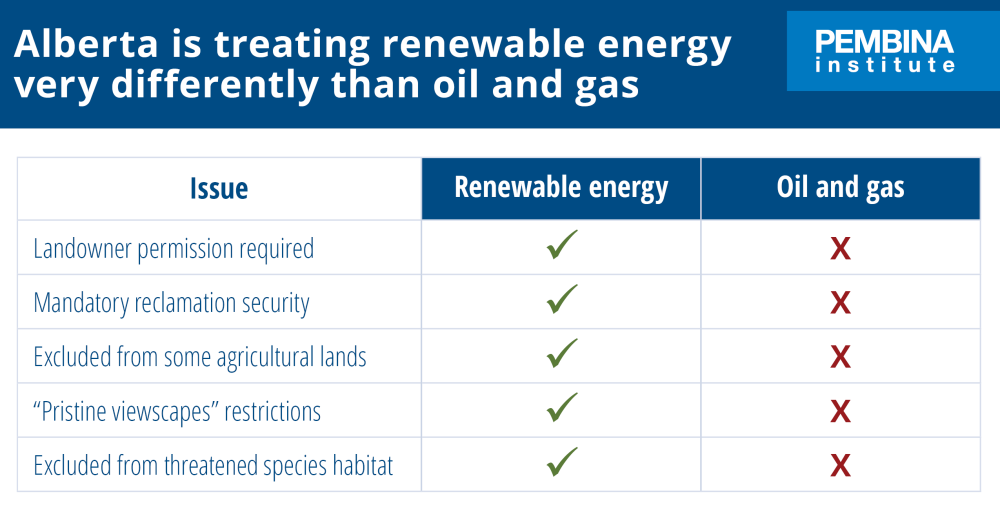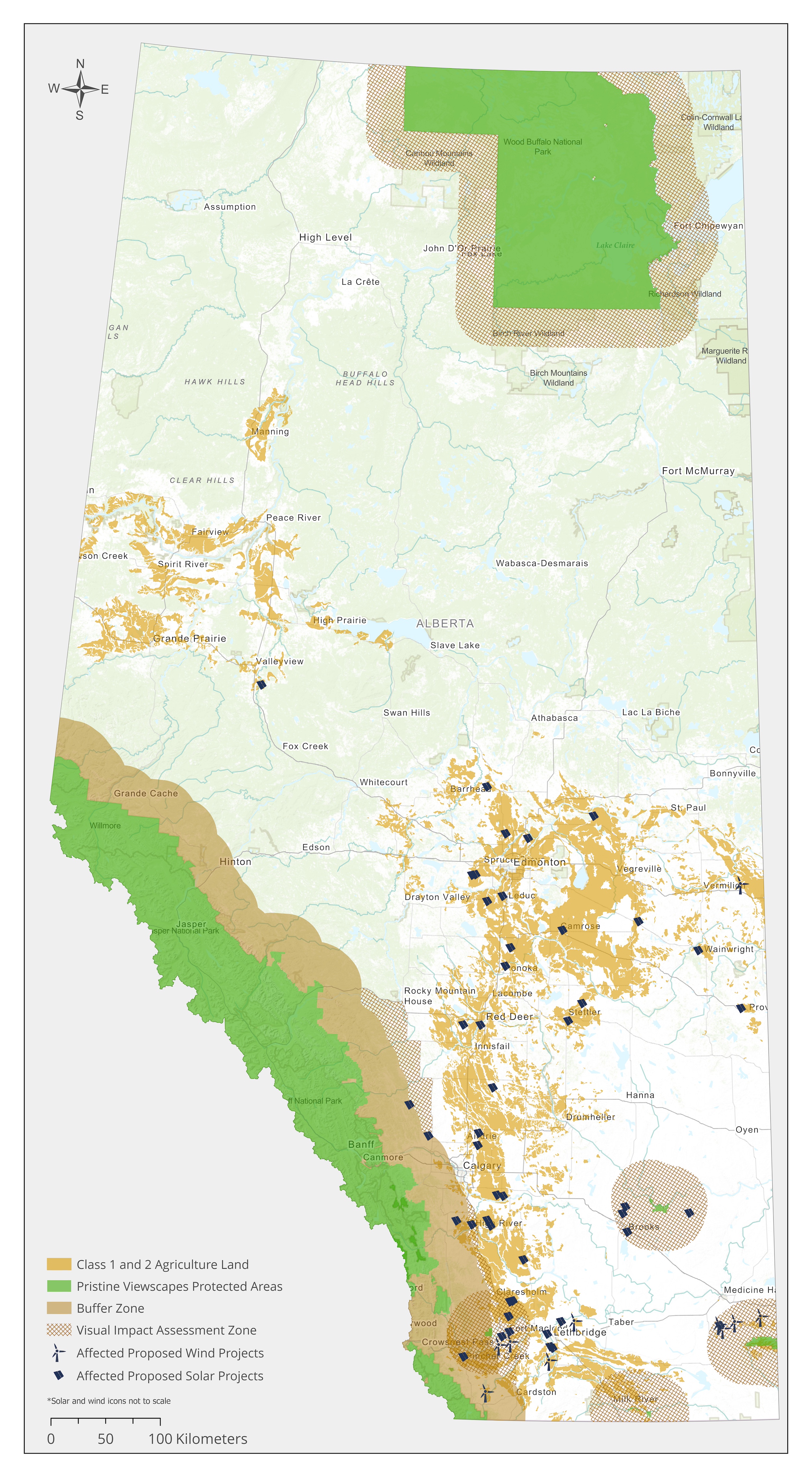
Photo: iStock.com/DonWhite
The end of Alberta’s seven-month moratorium on renewable energy development has been far from breezy. Initial announcements made on February 28, 2024 lacked clarity and underscored the Government of Alberta’s unfair treatment of the renewable energy sector by creating unnecessary hurdles that are not found in any other industry (see Figure 1).
Renewable energy is critical for meeting emissions reductions goals and addressing climate change. As noted by the Alberta Utilities Commission (AUC) in its inquiry report on land use issues, “regulatory restrictions on the development of wind and solar generation may indirectly harm the public by slowing the adoption of technology that contributes to diversifying the electricity sector, decarbonizing the electric grid, and combatting climate change.” Because they are fuel-saving sources of energy and manufacturing processes continue to improve, renewables are also the lowest-cost option for energy. This saves Albertans hundreds of dollars annually on their electricity bills. In fact, decarbonizing the grid could save Albertans $600 per household.
The restrictions announced for renewables unfairly target the renewable energy sector – a sector that was already being held to stringent development requirements. These restrictions could also result in higher electricity costs for Albertans and increased health risks associated with climate change.

Figure 1. Regulations for renewable energy in comparison to oil and gas
As the Government of Alberta continues to outline its parameters for the new land-use restrictions and other rules, we urge the Government to consider the AUC recommendation that “any prohibition on development intended to achieve viewscape preservation be industry agnostic, and apply equally to all forms of development within the restricted zone, not just electricity generation.”
Companies, landowners and investors are still waiting for clear and critical information about the impact of the proposed rules. The most recent information around “viewscapes” restrictions comes from a draft government map marked “draft not for official use” that was released March 15, 2024, by stakeholders and media. The Government of Alberta has yet to formally release a final map or rules associated with these areas. In the absence of official impact maps, the Pembina Institute has worked to help inform the public by providing a potential impact map based on publicly available data.
To identify the potential impact of viewscapes and visual impact assessment zones on proposed wind and solar projects in the province, we developed a map based off the Government of Alberta’s released draft. We further overlaid Class 1 and 2 agricultural land to gain a more comprehensive understanding of the impact of the province’s land-use restrictions for renewables (Figure 2). This was done to address the announced policy change restricting renewable energy development on Class 1 and 2 lands through new requirements for projects to demonstrate the ability to “coexist” with agriculture. Our identification of agricultural lands follows the methodology outlined in an earlier Pembina Institute factsheet assessing the potential impact of the new rules. We use the Canada Land Inventory (CLI) at the 1:250,000 scale which is similar to the Alberta AGRASID dataset reports multiple Land Suitability Rating System (LSRS) ratings data per area.

Figure 2. Map of proposed solar and wind projects that could be impacted by current land-use restrictions
Taking into account the draft “no-go” zones map for viewscapes and visual impact assessment zones, and Alberta’s agricultural restrictions, 57 projects worth at least $14 billion in investments could be impacted. Thirty-five projects appear to fall within the agricultural limitations while the remaining 22 would be in the visual impact assessment or no-go zones.
Research by the Business Renewables Centre-Canada has identified the future municipal revenues that may be at risk if projects are not able to proceed. Some municipalities have expressed concerns that no-go zones will have a large negative impact on rural tax revenues. Of the 57 projects we identified, 32 qualify for municipal taxes and would bring $80 million in potential revenue.
We urge the Government of Alberta to finalize and officially release its map and rules for viewscapes and visual impact assessment zones, providing much-needed clarity to an industry that is instrumental for ensuring affordable and reliable electricity.
Courtney Smith is a senior communications lead for the Pembina Institute, shaping communications on electricity and oil and gas work. She is based in Vancouver.
Jason Ruochen Wang is a senior analyst working on the Pembina Institute's electricity program, focusing on Canada’s net-zero electricity grid goal, electric vehicle infrastructure, and regulatory reform for utilities. He is based in Edmonton.
Karambir Singh is an analyst with the Pembina Institute's clean electricity program. He is based in Edmonton.





